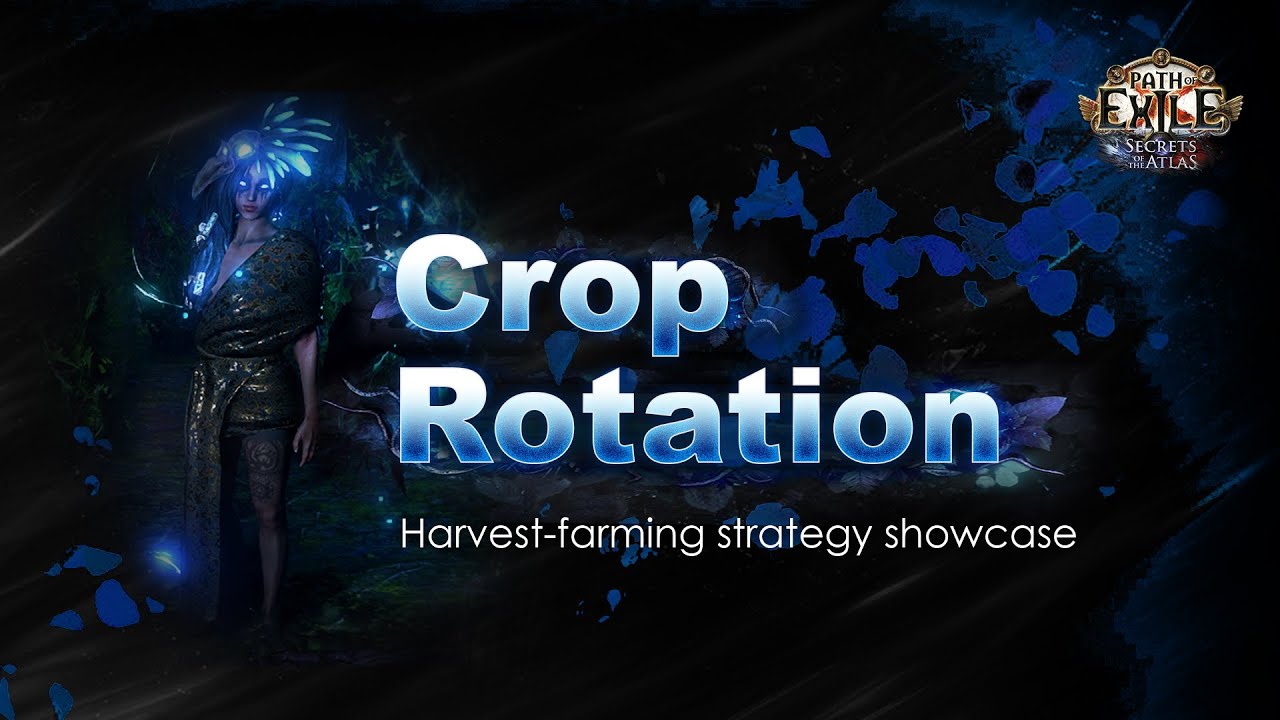- > PoE 2 Shapeshift Druid Leveling Guide: Best Druid Build for Campaign
- > PoE 2 0.4 The Last Of The Druids Release Date and Full Update Guide
- > Path of Exile 2 Patch 0.4.0 Release Date and Endgame Overhaul Guide
- > PoE 3.27 Best T17 Map Builds & Crafting Guide - Top Meta Setups for Endgame
- > PoE 3.27 Keepers of the Flame Righteous Fire Chieftain Guide
- > PoE 3.27 Genesis Tree Crafting Guide - Best Ways to Get 6-Link Gear and Unique Items
PoE 3.26 Crop Rotation Harvest Farming Strategy | High Yield Guide
If you're grinding in Path of Exile 3.26: Secrets of the Atlas, one high-yield method serious veterans swear by is the crop rotation harvest farming strategy. It may require a bit more brainpower than simple alch-and-go, but results routinely hit 1 to 2 Divines per map when executed properly. And if you’d rather skip the grind and scale up faster, it’s common to buy PoE currency from PVPBank to afford scarabs and atlas investments early.
This guide walks you through crop rotation mechanics, why it matters, your scarab and atlas setup, map shaping, and how to consistently cash in big.
Why Crop Rotation Harvest Works in PoE 3.26
In the Harvest league, five crop plots appear in the sacred grove each run, each growing into blue, purple, or yellow crops. Yellow yields high-tier lifeforce; blue and purple are conversion gates. With crop rotation, you selectively harvest crops in order to upgrade others into higher tiers. The usual sequence: blue first, then purple, holding yellow until later. This maximizes chances of Tier 3 yellow crop upgrades and avoids wilting.
On Reddit veteran runs, users report average juice yields from 2.5k per map up to over 3k lifeforce. That’s 1–2 Divines worth per map in raw value, depending on current trade ratios. Consistent yields over time are what make crop rotation stand out from standard harvest farming.
Scarabs, Map Device & Altars Setup
To get the most from crop rotation:
-
Use Harvest Scarab of Doubling for more juice per plot.
-
Add Scarabs of Monster Lineage or Horned Scarab of Awakening for bonus drops.
-
Craft 8-mod maps (especially Jungle Valley) with high pack size and quantity.
-
Run altar-enabled maps like Eater or Exarch to increase map density and altars before harvesting.
Clearing the map first to trigger altars is key. Veteran players recommend clearing Jungle Valley fully, then harvesting. That increases blue altar chance, tying into quantity buffs on harvest itself.
Atlas Passive Tree Tips
For scaling crop rotation:
-
Invest in Harvest nodes that increase yellow and blue crop upgrades.
-
Grab nodes for shrine and map density to boost altar frequency.
-
Add scarab effect and drop chance nodes to maximize returns.
-
Invest in map quantity and pack size passives to influence juice drop volume.
A solid atlas tree helps control map modifiers, altar frequency, and scarab output — everything crop rotation relies on.
Plot Order & Milling Mechanic
Crop rotation isn’t a free-for-all, it’s puzzle-like. Here's how to approach each plot:
-
Harvest blue first. Each blue harvested upgrades remaining plots.
-
Then harvest purple. This promotes yellow to Tier 3 or prevents wilt.
-
Check the wilt prevention notable — this gives you a 10% chance to retain plot color.
-
Harvest yellow last, when seed tiers have upgraded. This yields maximum juice.
Avoid harvesting yellow early. Multiple successful veteran runs show poor order cuts average juice by over half.
Live Example: 60 Map Run Breakdown
One veteran streamer tested 60 rotations with a 40 Divine investment in scarabs. After selling juice, final results showed consistent profit of 1–2 Divines per map. That aligns with documented results from high-efficiency seasoned players — crop rotation isn’t theoretical, it's repeatable profit.
Common Mistakes to Avoid
-
Harvesting yellow too early
-
Ignoring the wilt prevention notable
-
Skipping altar clears before harvest
-
Underinvesting in scarabs or atlas tree nodes
-
Skimping on map mods like quantity and pack size
Veterans warn that skipping key elements turns crop rotation into low-yield gamble rather than reliable farming.
Profit Expectation and Scaling
| Setup | Expected Juice per Map | Approximate Currency |
|---|---|---|
| Basic rotation | 1500 – 2500 yellow | 1.0 – 1.5 Div per map |
| Juiced rotation w/ scarabs | 2.5k – 4k+ | 1.5 – 2 Div per map |
| 60 map session | 150k+ juice | ~90+ Divine Orbs |
Scaling this method over dozens of sessions makes crop rotation a powerful early to mid-league currency driver.
When to Buy Currency to Jumpstart Farming
Crop rotation shines once you have enough scarabs, maps, and atlas control. If you’re strapped on startup capital, it’s common to buy PoE currency via PVPBank. That allows you to afford key scarabs, invest in map crafting, and unlock atlas nodes quickly. Many veterans use this to go from zero to juice flow in day one of the league.
Harvest vs Alch-and-Go: Which to Choose?
-
Alch-and-Go is simpler: alch maps, run fast, minimal setup, yields steady lifeforce (about 800–1000 juice).
-
Crop Rotation takes prep but yields 2–4 Divines per map on high-tier runs.
Many veterans start with alch-and-go to build stash wealth and transition to crop rotation once they’re set up. That compound growth unlocks more and more leveraged returns.
Final Words from a Veteran
Crop rotation in PoE 3.26 Harvest is not a gimmick—it’s a scalable, strategic, high-yield farming loop. It’s about timing, puzzle efficiency, and atlas control. Nail it and lifeforce becomes a rolling income stream.
If you're low on startup currency, know that PVPBank is a trusted option to buy PoE currency and get cropping early. Let me know if you want help planning atlas nodes, scarab setups, or mapping your harvest loop.

